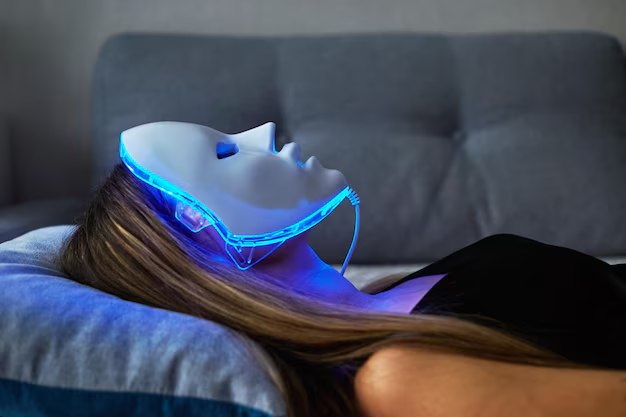Can Red Light Therapy Manage Rosacea? Here’s What You Should Know
If you're among the millions battling rosacea, you likely know the frustration of trying one remedy after another. From creams to dietary changes, finding effective relief can feel elusive. Enter red light therapy—a treatment renowned for various skin benefits, now gaining attention as a potential option for rosacea sufferers. But can red light therapy really help? This article explores this intriguing question, delving into how it might work, what science says, and its practical considerations.
Understanding Rosacea: A Quick Overview
Rosacea is a chronic skin condition that primarily affects the face, leading to redness, visible blood vessels, and sometimes painful, swollen bumps resembling acne. While its exact cause remains unknown, triggers are identified, ranging from sun exposure to spicy foods. The condition can significantly impact self-esteem, fostering an urgent need for effective treatments.
Common Symptoms of Rosacea
- Facial Redness: Persistent redness and flushing, especially on the cheeks, nose, chin, or forehead.
- Visible Blood Vessels: Tiny blood vessels may become visible on the skin.
- Bumps and Pimples: Small, red, sometimes pus-filled bumps can develop.
- Eye Irritation: Eyes can become dry and irritated, sometimes leading to complications like ocular rosacea.
What Is Red Light Therapy?
Red light therapy (RLT) is a treatment that uses low-level wavelengths of light to address several medical and cosmetic concerns. It works by penetrating the skin and stimulating energy production within cells, promoting healing and rejuvenation.
How Does Red Light Therapy Work?
- Cellular Energy Boost: Red light helps improve mitochondrial function, leading to increased adenosine triphosphate (ATP) production, which fuels cellular activity and repair.
- Collagen Production: It stimulates collagen synthesis, improving skin texture and elasticity.
- Reduced Inflammation: The treatment can help moderate inflammation, a key concern in rosacea.
Potential Benefits of Red Light Therapy
- Skin Rejuvenation: Reduces fine lines, wrinkles, and age spots.
- Wound Healing: Assists in faster recovery from injuries and surgical wounds.
- Pain Relief: Utilized for its anti-inflammatory and analgesic properties to relieve pain from conditions like arthritis.
Can Red Light Therapy Help With Rosacea?
Red light therapy's array of skin benefits sets a promising stage for rosacea treatment, focusing on the condition's inflammatory nature. While direct research on rosacea is still emerging, studies on its efficacy for inflammation in other conditions are driving interest.
Key Points for Rosacea Management
- Reduces Inflammation: By reducing inflammation, RLT may alleviate some primary symptoms of rosacea, such as redness and swelling.
- Improves Blood Flow: Enhanced circulation might lessen the visibility of tiny blood vessels often seen in rosacea patients.
- Promotes Skin Repair: Through improved collagen production, RLT could rejuvenate skin and improve texture, potentially reducing rosacea’s impact.
Scientific Evidence
Currently, there are limited but promising studies specific to rosacea, with general consensus pointing towards a beneficial effect. More focused research, specifically large-scale clinical trials, is needed to establish definitive conclusions.
Practical Considerations for Red Light Therapy
Before embarking on red light therapy, there are several factors worth considering:
Accessibility and Use
- At-Home Devices: Widely available for personal use, offering convenience and privacy.
- Professional Sessions: Administered in clinics or spas, potentially bringing more precise results due to advanced equipment.
Safety and Side Effects
- Non-Invasive and Safe: Generally considered safe with minimal risk of adverse reactions.
- Temporary Effects: Some may experience temporary redness or tightness post-treatment.
Cost Factor
- Budget Options: At-home devices can be found across various price points, making RLT relatively accessible.
- Investment: While professional treatments might be pricier, they can also lead to more noticeable results in shorter time frames.
When to Consult a Professional
For those considering RLT for rosacea, consulting a dermatologist or healthcare provider can help tailor the approach to individual conditions and ensure optimal safety and efficacy.
Natural Lifestyle Modifications for Rosacea
While treatments like red light therapy may provide relief, complementary lifestyle changes can further aid in managing rosacea:
- Identify Triggers: Keep a diary to pinpoint and minimize flare-ups caused by specific foods, weather conditions, or activities.
- Sun Protection: Use a broad-spectrum sunscreen daily to protect sensitive skin from UV rays.
- Gentle Skincare: Opt for fragrance-free, non-irritating skincare products designed for sensitive skin.
The Future of Red Light Therapy in Rosacea Treatment
The intrigue surrounding red light therapy is only growing as the search for effective rosacea treatments continues. The overlapping benefits of RLT for various skin conditions position it as a frontrunner. Its integration into comprehensive rosacea management plans looks promising, especially with ongoing research illuminating its potential.
Final Insights
Red light therapy represents an intriguing option for those seeking alternative approaches to managing rosacea. While it's not a guaranteed solution, its potential benefits combined with supplementary lifestyle adjustments may contribute to an improved quality of life for those affected by this challenging condition.
🌟 Key Takeaways 🌟
- Red Light Therapy (RLT) offers potential anti-inflammatory benefits that may alleviate rosacea symptoms.
- It's accessible through both cost-effective at-home devices and professional sessions.
- Generally safe and non-invasive, RLT boasts minimal side effects.
- Complementary Lifestyle Changes: Identifying triggers and using gentle skincare can enhance treatment efficacy.
- Professional Consultation: Always consider a healthcare provider's input for personalized advice.
These highlights should empower you to explore whether red light therapy is a viable part of your rosacea management plan. 🌈
